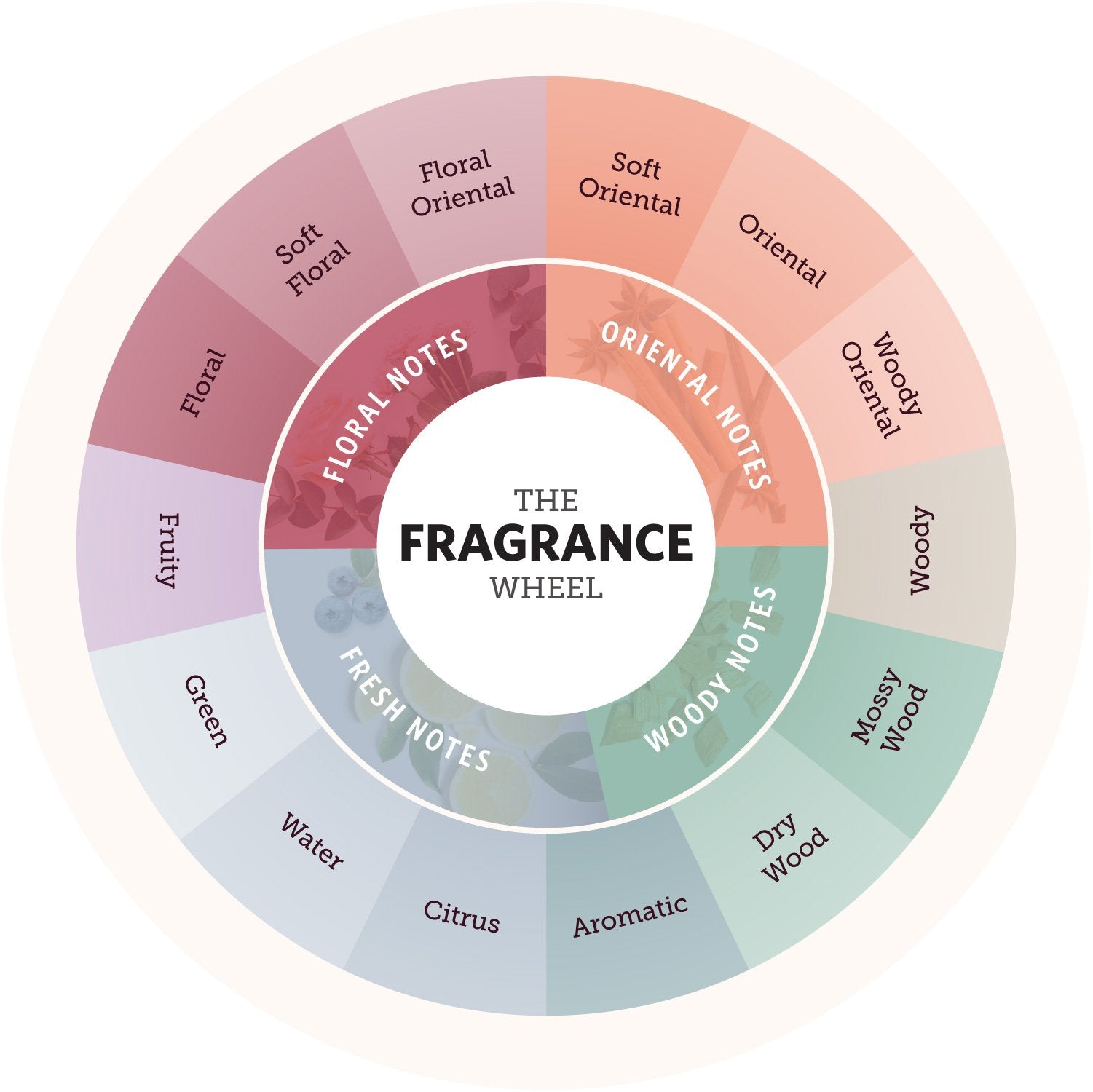

 Welcome to...
Welcome to...We believe you are trying to shop from the following location: Rest of the world
To enjoy low cost shipping and local currencies please allow us to redirect you to our local store.
Choose 3 for £45 or 5 for £75
Choose 2 from £115 or 3 from £160
Choose 2 for £20

Do you remember back in school when you would be shown a colour wheel for art? Colours sat next to eachother based on how they blended into eachother and the colours opposite would clash with eachother? Well the fragrance wheel works in a very similar way but instead of colours it is made up of four main fragrance categories which then divide up even further. The fragrance wheel is very useful to help you determine which scents you are typically drawn to with your fragrance. If you're purchasing a fragrance without smelling it first then this is a great way to work out if it will be the right match for you.

An Australian perfume-maker Paul Jellinek is widely credited with inventing the fragrance wheel in 1949. First published in his book The Practice of Modern Perfumery his diagram detailed how various scents related to one another, in terms of their olfactory personality (otherwise known as their smell). Since this discovery many perfumers have developed Jallinek's concept further. These perfumers include Michael Edwards who in 1992 adapted the wheel to the version we use today. As well as developing the wheel, Edwards is also author of ‘Fragrances of the World’, making him the leading expert on fragrance classification.
Made up of four main categories, floral, woody, oriental and fresh, are sub-groups. These sub-groups describe each scent in more detail such as 'fresh citrus' and 'soft floral'. Where a fragrance is placed on the wheel is important. Depending on the notes that are added a floral scent could become a 'soft floral' or 'floral oriental'. Typically people prefer fragrances from one or two families. The sub-categories are:


The fresh scent family can be described as clean bright scents. Aquatic, herby, citrusy and oceanic scents all fall into this category. More often used in men’s fragrances than women’s fragrances, fresh scents are paired with spicy notes to create a more robust fragrance. Aromatic, tart notes can also be found mixed with zesty or fruity scents. The sub fimilies are made up of:

Woody perfumes are usually warming and luxurious. Deeper notes such as patchouli or sandal wood are often mixed with dry notes like cedar. Citrus notes are also a common combination such as the refreshing citrus burst of oranges combined with its notes of musk, woods and smoky leather in our Blood Oranges fragrance. Notes in this family can be described as coniferous or woody and bitter. Notes typically are Patchouli, Veviter and Sandalwood and the sub families include:

Made up of rich, exotic scents the oriental family makes you think of herbs and spices or dry, powdery, resin notes. These fragrances are often then softened with sweeter notes such as chocolate or amber. This fragrance family is typically described as seductive and exotic. The sub-families of oriental fragrances are:
The same way you would use a colour wheel to work out which colours go together you can use the fragrance wheel to work out which scents to layer. Take a look at the sub families that are next to eachother, fragrances from these families will almost always blend well together.
You can also pick a sub-family to start with and see which note appears across from it on the fragrance wheel. This means that those notes are complementary to one another. For example, soft oriental will complement citrus, and oriental will complement water.
Finally, you can select three fragrance sub-families that create a triangle on the fragrance wheel. You’ll find that these will complement each other nicely. For example, if you know you like floral oriental notes, look for a scent that contains mossy and water notes as well.
Like this article? Sign up to our newsletter to get more delivered straight to your inbox
_____________
References:
https://copycatfragrances.co.uk/blogs/posts/understanding-the-fragrance-wheel
https://www.fragrancex.com/blog/fragrance-wheel/
https://www.allbeauty.com/articles/the-fragrance-wheel-explained-and-how-to-use-it
How to Make Your Fragrance Last All Day
Rhubarb Sandalwood: The Bold Fusion of Fresh & Warmth You Didn’t Know You Needed
Customer service
Talk to us via chat. 9-5pm EST. Wed - Sun
Fast Free Shipping
Get free shipping on orders of £60 or more
New Customers
New customers enjoy 10% off their first order
Secure payment
Your payment information is processed securely


Share:
'Cheap' vs 'Expensive' Fragrances, Is There A Big Difference?
Florals - Not Just for Girls